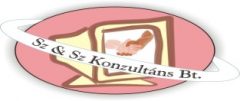It is used to transfer totals from books of prime entry into the nominal ledger. Every transaction is recorded twice so that the debit is balanced by a credit. The accounting equation equates a company’s assets to its liabilities and equity. This shows all company assets are acquired by either what is the accounting equation debt or equity financing. For example, when a company is started, its assets are first purchased with either cash the company received from loans or cash the company received from investors. Thus, all of the company’s assets stem from either creditors or investors i.e. liabilities and equity.
- Revenue and owner contributions are the two primary sources that create equity.
- This lesson presented the basic accounting equation and how it stays equal.
- This transaction would reduce an asset (cash) and a liability (accounts payable).
- This transaction would reduce cash by $9,500 and accounts payable by $10,000.
What Are the 3 Elements of the Accounting Equation?
Liabilities and capital were not affected in transaction #3. Simply put, the rationale is that the assets belonging to a company must have been funded somehow, i.e. the money used to purchase the assets did not just appear out of thin air to state the obvious. Accountingo.org aims to provide the best accounting and finance education for students, professionals, teachers, and business owners. Understanding how the accounting equation works is one of the most important accounting skills for beginners because everything we do in accounting is somehow connected to it.
Shareholders’ Equity
Net income represents the balance after subtracting expenses from revenues. It’s important to note that net income may also be net loss if your net income comes to a negative number. Cash dividends are cash payouts to those who own common stock. Sole proprietors hold all of the ownership in the company.
Retained earnings equation.
The only equity is Sam’s capital (i.e., owner’s equity amounting to $100,000). The rights or claims to the properties are referred to as equities. A T-account is a visual representation of the general ledger, whereas the general ledger is an accounting record that shows more detailed information than a T-account. Accountants and bookkeepers use the T-account to analyze transactions and spot errors easily without going through detailed ledger information.
Let’s add transaction #3:
Interest (ie finance costs) are an expense to the business. Therefore cash (asset) will reduce by $60 to pay the interest (expense) of $60. Assets are the stuff that a business owns that have value. You can think of them as resources that a business controls due to past transactions or events. The 500 year-old accounting system where every transaction is recorded into at least two accounts. Incorrect classification of an expense does not affect the accounting equation.
px” alt=”what is the accounting equation”/>https://www.1investing.in/ and the statement of operations. The income statement reports the revenues, gains, expenses, losses, net income and other totals for the period of time shown in the heading of the statement. If a company’s stock is publicly traded, earnings per share must appear on the face of the income statement.
Each example shows how different transactions affect the accounting equations. The business’s balance sheet is at the end of the section. Assets pertain to the things that the business owns that have monetary value.
The accounting equation is the foundation of a bookkeeping system. It’s the compass that guides all accountants and bookkeepers, even if transactions get complex. For small businesses, knowing how the accounting equation works can help you better understand financial statements, along with how bookkeepers do their jobs. Anushka will record revenue (income) of $400 for the sale made. A trade receivable (asset) will be recorded to represent Anushka’s right to receive $400 of cash from the customer in the future.
In the above transaction, Assets increased as a result of the increase in Cash. At the same time, Capital increased due to the owner’s contribution. Remember that capital is increased by contribution of owners and income, and is decreased by withdrawals and expenses. As business transactions take place, the values of the accounting elements change. The accounting equation nonetheless always stays in balance.
The accounting method under which revenues are recognized on the income statement when they are earned (rather than when the cash is received). The balance sheet is one of the three main financial statements that depicts a company’s assets, liabilities, and equity sections at a specific point in time (i.e. a “snapshot”). Valid financial transactions always result in a balanced accounting equation which is the fundamental characteristic of double entry accounting (i.e., every debit has a corresponding credit). A company’s quarterly and annual reports are basically derived directly from the accounting equations used in bookkeeping practices. These equations, entered in a business’s general ledger, will provide the material that eventually makes up the foundation of a business’s financial statements.
Whereas a high profit margin generally indicates a healthy company. An asset can be cash or something that has monetary value such as inventory, furniture, equipment etc. while liabilities are debts that need to be paid in the future. For example, if you have a house then that is an asset for you but it is also a liability because it needs to be paid off in the future. At this point, let’s consider another example and see how various transactions affect the amounts of the elements in the accounting equation. Liabilities are claims on the company assets by other companies or people.
